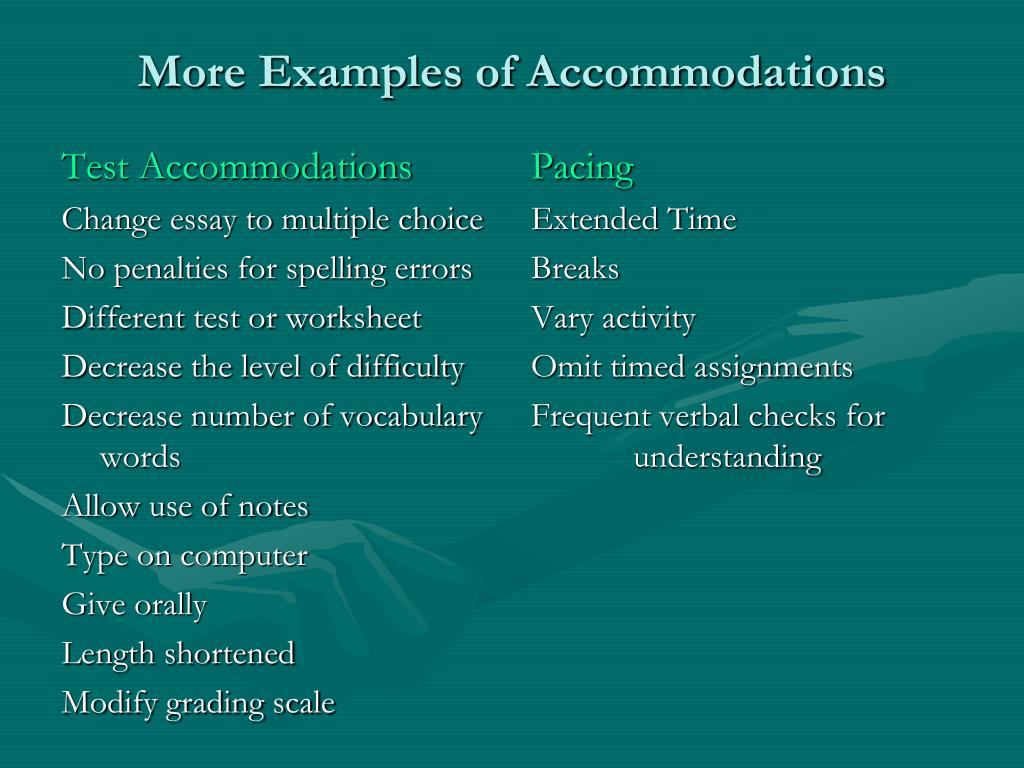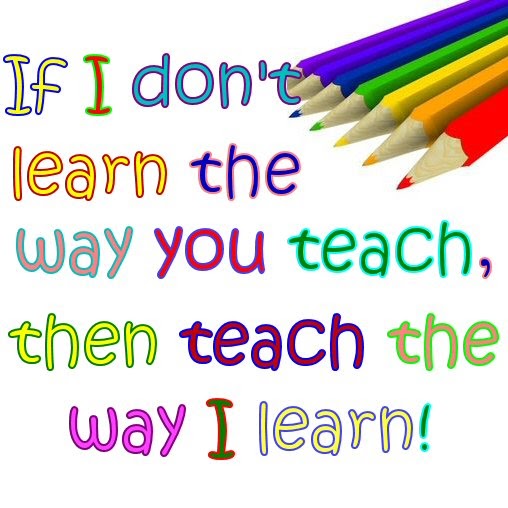

Illustrations in a book being read should be used to generate conversation, vocabulary and concepts that will relate to what is to be read. Oral and written language should be taught together as much as possible.Allow sufficient “wait-time for the answer or provide the questions in written form. For students who seem to process auditory information slowly (e.g., not fully understanding questions asked, recalling needed information, or forming an appropriate answer), be patient.For students whose writing is large, provide enlarged spaces for “fill in the blank” activities. For left-handed students, place the list of words at the right margin.
 For students who copy inaccurately, but need written practice to solidify learning, changes that may help include: leaving a space directly under each word, phrase or sentence, or having handouts on the desk for those who can’t copy from the blackboard or take dictation accurately. a personally-developed date-book or scheduler. a homework assignment diary coordinated between home and school. purchased texts that can be marked with a highlighter. For students who have difficulty organizing time, materials and information, a variety of approaches can be used, including:. A dictionary or thesaurus, suited to the child’s learning level, is also an excellent tool for building vocabulary, spelling and reading comprehension. Ways to improve vocabulary and comprehension can include a student-developed file of vocabulary words and the use of word webs and visual organizers to relate words and ideas heard or read on paper. To teach spelling, the teacher might use a multi-sensory approach that combines saying, spelling aloud, and writing words. To develop memory and listening skills, poetry, rhymes, songs, audio-taped materials and mnemonics may improve performance. For students who have difficulty reading cursive, small, or crowded print, typed handouts, large print, or double spaced materials can help. For students who have difficulty with spelling, a “misspeller’s dictionary” or computerized spell checker can help make written materials readable.
For students who copy inaccurately, but need written practice to solidify learning, changes that may help include: leaving a space directly under each word, phrase or sentence, or having handouts on the desk for those who can’t copy from the blackboard or take dictation accurately. a personally-developed date-book or scheduler. a homework assignment diary coordinated between home and school. purchased texts that can be marked with a highlighter. For students who have difficulty organizing time, materials and information, a variety of approaches can be used, including:. A dictionary or thesaurus, suited to the child’s learning level, is also an excellent tool for building vocabulary, spelling and reading comprehension. Ways to improve vocabulary and comprehension can include a student-developed file of vocabulary words and the use of word webs and visual organizers to relate words and ideas heard or read on paper. To teach spelling, the teacher might use a multi-sensory approach that combines saying, spelling aloud, and writing words. To develop memory and listening skills, poetry, rhymes, songs, audio-taped materials and mnemonics may improve performance. For students who have difficulty reading cursive, small, or crowded print, typed handouts, large print, or double spaced materials can help. For students who have difficulty with spelling, a “misspeller’s dictionary” or computerized spell checker can help make written materials readable. Accommodations special education software#
For students whose handwriting is slow, illegible or includes many reversed letters, a cassette recorder or a computer with word processing software could be used for written work or tests. For students with short term memory problems (e.g., understand math processes, but have short term memory problems that interfere with remembering math facts), a table of facts or a calculator could be provided. For students who read below expected levels, educational videos and films or talking books can provide the general information that cannot be acquired from the printed page.  For students with memory problems or difficulty taking notes, a fellow student might share notes the student might tape the lesson or the teacher might provide a copy of the lesson outline.
For students with memory problems or difficulty taking notes, a fellow student might share notes the student might tape the lesson or the teacher might provide a copy of the lesson outline. 
For some students who read slowly or with difficulty, a “read-along” technique may be used with taped texts and materials to allow learning of printed materials.A carefully developed multidisciplinary approach will make classroom instruction meaningful for students. Information and ideas from a multidisciplinary team, including the parents and student, are important for developing an Individualized Education Program (IEP) that meets the unique needs of each student with learning disabilities. Selection from these and other possibilities must be based on the individual needs of each child. Listed below are some suggested ways to aid students with specific learning disabilities (SLD) learn more effectively at home or at school. While the majority of a student’s program should be as closely aligned with the general education curriculum as possible, some accommodations and modifications may be necessary.








 0 kommentar(er)
0 kommentar(er)
